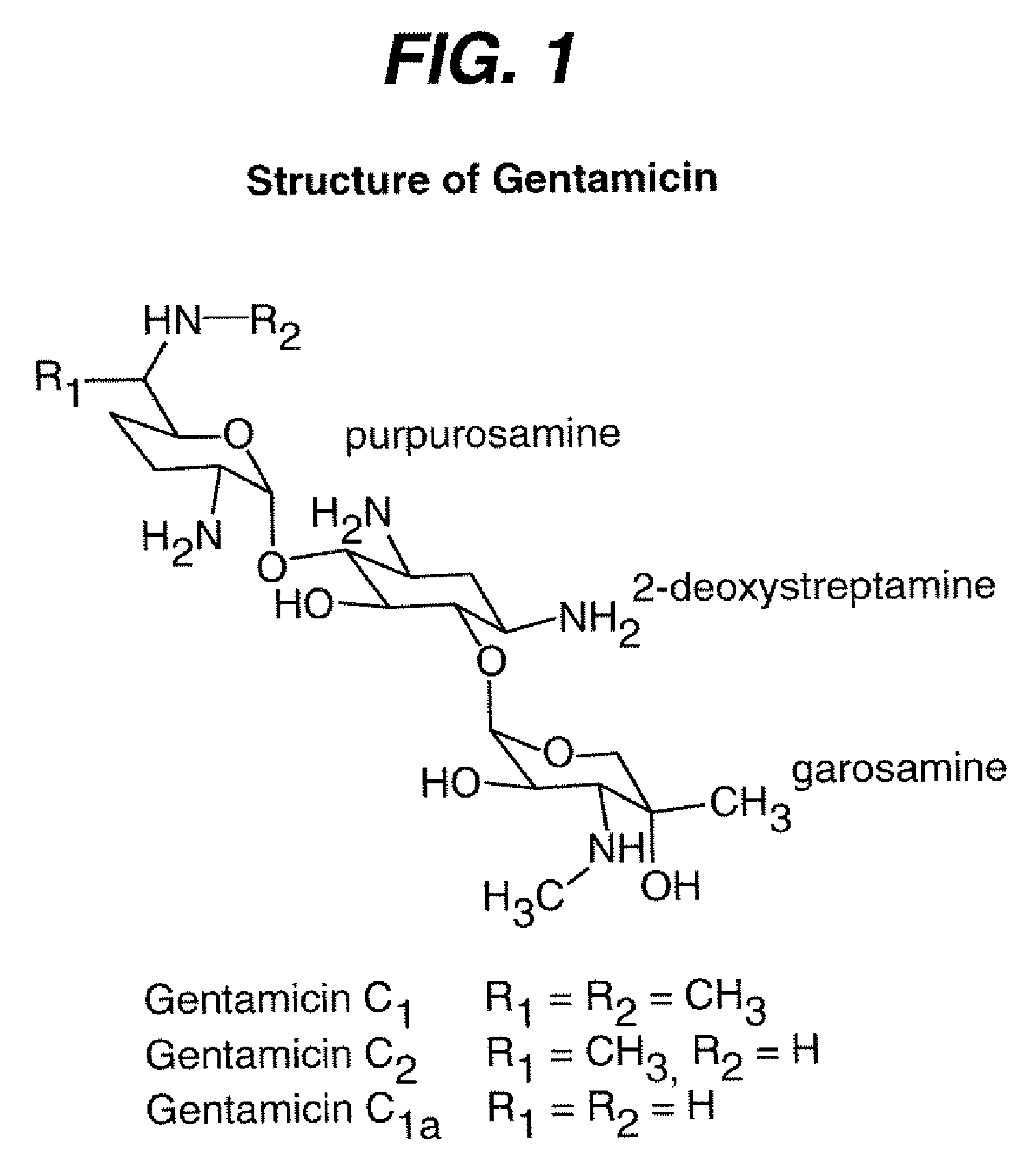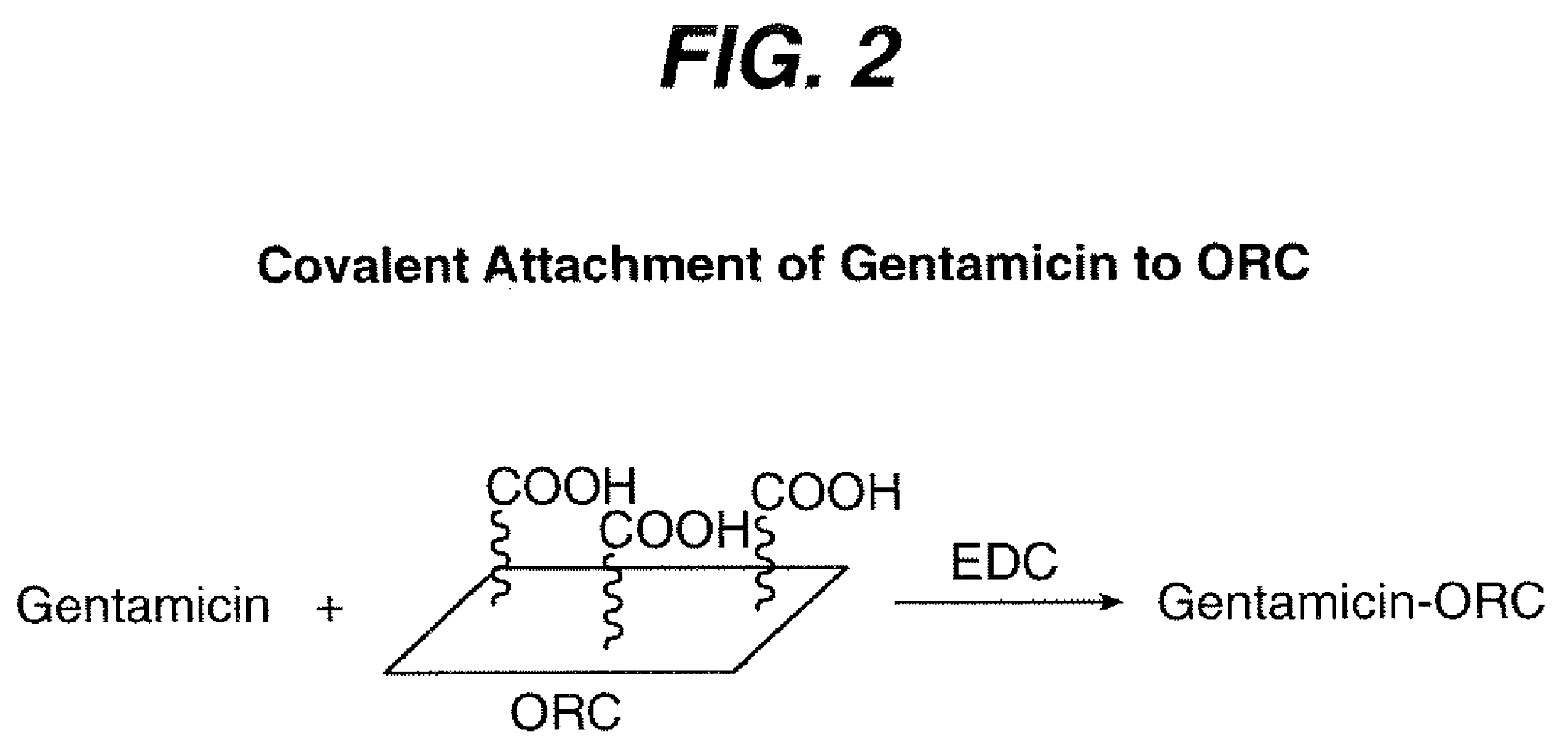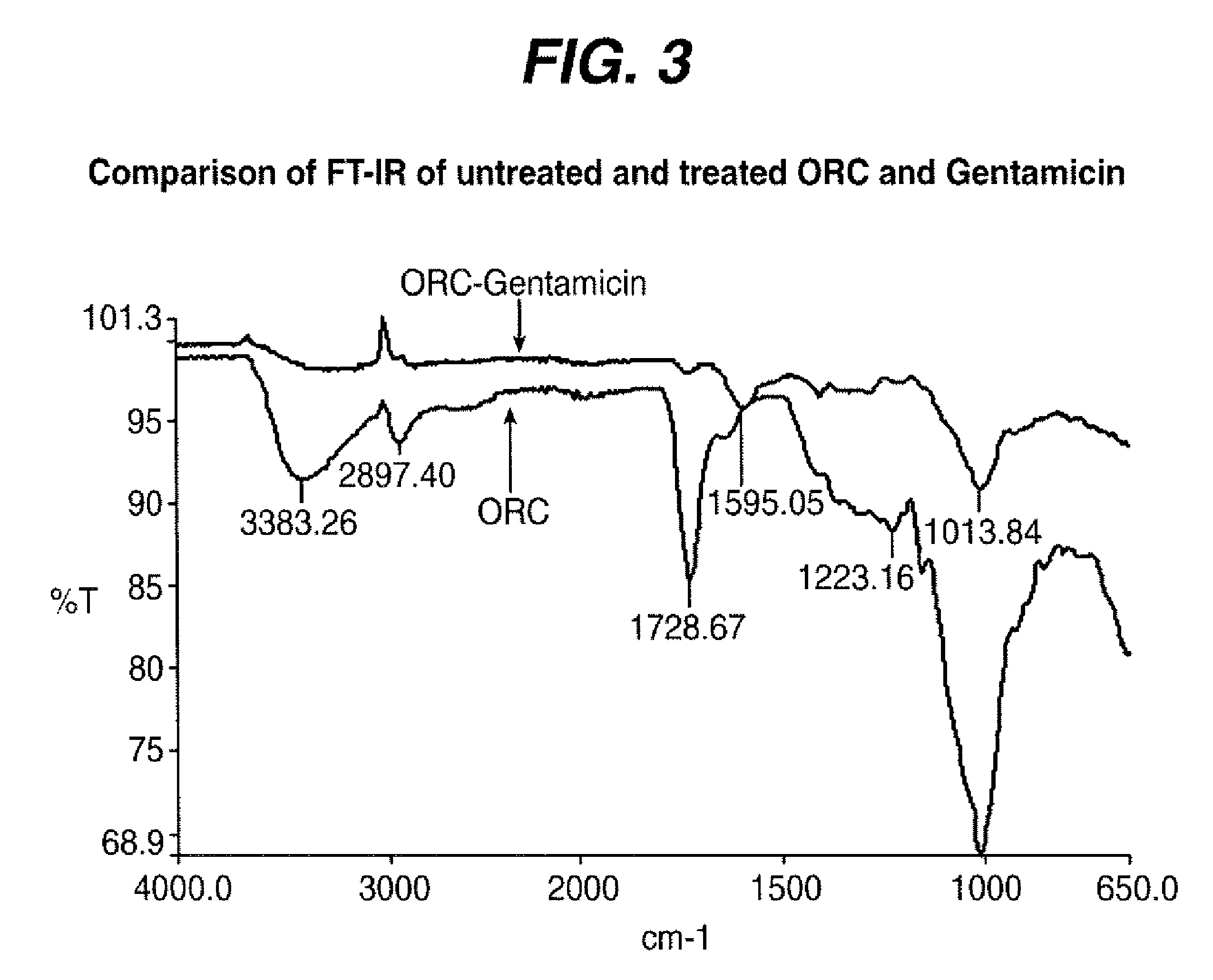Polymers having covalently bound antibiotic agents
a technology of covalently bound antibiotic agents and polymers, which is applied in the direction of drug compositions, biocide, sugar derivates, etc., can solve the problems of increasing the risk of infection for invasive or implantable medical devices, increasing the risk of infection dramatically, and increasing the risk of infection for patients. infection and morbidity and mortality,
- Summary
- Abstract
- Description
- Claims
- Application Information
AI Technical Summary
Benefits of technology
Problems solved by technology
Method used
Image
Examples
example 1 (
Inventive)
Preparation of ORC-Gentamicin (ORC-GM-CVB) Compound
Materials
[0028]All materials were purchased from Sigma-Aldrich and used as received with the exception of oxidized regenerated cellulose (ORC) fabric, which is available from Ethicon, Inc., under the tradename Interceed®. Gentamicin was acquired in sulfate form from Sigma-Aldrich as mixtures of analogs as shown in FIG. 1.
Procedure
[0029]The synthesis is outlined in FIG. 2.
[0030]ORC fabric was cut into 1″ strip weighing 0.25 g. The cut ORC strip was dried under vacuum at room temperature over night. The dried ORC strip was placed into Gentamicin solution (5 ml) in a 20 ml vial. 0.080 g 1-Ethyl-3-(3-dimethylaminopropyl)-carbodiimide (EDC) was added and the reaction vial was sealed under N2 atmosphere. The reaction vial was left on a shaker at room temperature overnight.
[0031]ORC fabric was retrieved from the reaction mixture, rinsed with copious running deionized (DI) water, submerged in 50 ml DI water for 30 min and 50 ml me...
example 2 (
Inventive)
[0034]The following study was conducted to demonstrate that the covalently bond Gentamicin maintained the antibacterial efficacy (table 1).
[0035]Two samples were used for the study, as follows:[0036]1. Untreated ORC fabric[0037]2. ORC-GM-CVB: ORC fabric with covalently bound Gentamicin prepared according to example 1
[0038]For result in table 1, test articles were tested for their in vitro efficacy by log reduction assay. To demonstrate the efficacy of covalent bond GM, the test articles were extracted in saline to remove free gentamicin before use. The test articles were squares of about 4.0 mg / piece and were extracted in 40 ml / item of sterile saline at 37° C. with shaking (100 rpm) for 1 hour for two consecutive times. Efficacy of the test articles after the extractions was evaluated by log reduction assay.
[0039]In the log reduction assay, the test articles were challenged with about 1-2×10e4 CFU bacteria on the surface of the test articles for one hour. To facilitate the...
PUM
| Property | Measurement | Unit |
|---|---|---|
| wt. % | aaaaa | aaaaa |
| volume | aaaaa | aaaaa |
| concentration | aaaaa | aaaaa |
Abstract
Description
Claims
Application Information
 Login to View More
Login to View More - R&D
- Intellectual Property
- Life Sciences
- Materials
- Tech Scout
- Unparalleled Data Quality
- Higher Quality Content
- 60% Fewer Hallucinations
Browse by: Latest US Patents, China's latest patents, Technical Efficacy Thesaurus, Application Domain, Technology Topic, Popular Technical Reports.
© 2025 PatSnap. All rights reserved.Legal|Privacy policy|Modern Slavery Act Transparency Statement|Sitemap|About US| Contact US: help@patsnap.com



